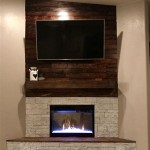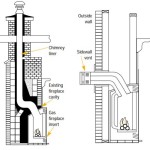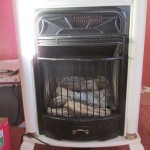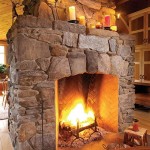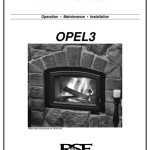Gas Fireplaces in Portland: A Comprehensive Guide
Portland, Oregon, with its cool, damp winters, presents an ideal environment for the widespread adoption of gas fireplaces. These appliances offer a convenient and efficient heating solution, providing both supplementary warmth and aesthetic appeal. This article delves into the various aspects of gas fireplaces in Portland, encompassing the different types available, factors to consider when choosing one, installation requirements, maintenance procedures, and relevant local regulations.
Types of Gas Fireplaces
Gas fireplaces are generally categorized into three main types: gas inserts, freestanding gas stoves, and built-in gas fireplaces. Each type possesses distinct features and is suitable for different applications.
Gas Inserts: Gas inserts are designed to be installed within existing wood-burning fireplace cavities. They are essentially self-contained gas fireplaces that convert an inefficient wood-burning fireplace into a more efficient and convenient gas-fueled heating source. Inserts typically consist of a firebox, burner, gas valve, and venting system. They often include features like remote control operation, thermostatic control, and variable flame height adjustment. The installation process involves connecting the gas line, venting the unit through the existing chimney (often requiring a liner), and securing the insert within the fireplace opening. Gas inserts offer a practical solution for homeowners looking to upgrade their existing fireplaces without undertaking extensive remodeling projects.
Freestanding Gas Stoves: Freestanding gas stoves resemble traditional wood-burning stoves but utilize gas as their primary fuel source. They are typically installed as standalone units and do not require an existing fireplace. These stoves are available in various styles, from traditional to contemporary, and can serve as a focal point in a room. They offer zone heating capabilities, allowing homeowners to heat specific areas of their homes without turning on the central heating system. Installation typically involves connecting the gas line and venting the stove directly through the wall or roof. Freestanding gas stoves are a versatile option for adding supplemental heat to various spaces, including living rooms, bedrooms, and home offices.
Built-In Gas Fireplaces: Built-in gas fireplaces, also known as direct-vent fireplaces, are designed to be integrated into a wall or custom-built enclosure. They offer a sleek and modern aesthetic and can be customized to fit a range of design preferences. These fireplaces feature a sealed combustion chamber, which draws outside air for combustion and vents exhaust gases directly outside. This design eliminates the need for a traditional chimney and enhances energy efficiency. Built-in gas fireplaces are often chosen for new construction or remodeling projects where a modern and integrated fireplace design is desired. Installation requires careful planning and coordination with contractors to ensure proper venting and gas line connections.
Factors to Consider When Choosing a Gas Fireplace
Selecting the appropriate gas fireplace requires careful consideration of several factors, including heating needs, room size, venting options, aesthetic preferences, and budget constraints.
Heating Capacity (BTU): The heating capacity of a gas fireplace is measured in British Thermal Units (BTU). The required BTU output depends on the size of the room or area to be heated. A larger room will necessitate a higher BTU rating to effectively raise the temperature. Consulting with a qualified HVAC professional or fireplace retailer is advisable to determine the appropriate BTU level based on the room’s dimensions, insulation, and climate conditions.
Venting Options: Gas fireplaces require proper venting to safely exhaust combustion gases. There are two primary venting options: direct-vent and B-vent. Direct-vent fireplaces draw air from outside for combustion and vent exhaust gases directly outside through a sealed system. This type of venting is highly efficient and versatile, allowing for flexible installation options. B-vent fireplaces, on the other hand, rely on a natural draft created by a chimney to vent exhaust gases. B-vent systems are typically less efficient than direct-vent systems and may require an existing chimney. The choice of venting option depends on the type of fireplace, building construction, and local building codes.
Energy Efficiency: The energy efficiency of a gas fireplace is an important consideration for minimizing energy consumption and reducing heating costs. Gas fireplaces are typically rated using an Annual Fuel Utilization Efficiency (AFUE) rating. A higher AFUE rating indicates greater energy efficiency. Direct-vent fireplaces generally offer higher AFUE ratings compared to B-vent fireplaces due to their sealed combustion chambers and controlled venting systems. Features such as thermostatic control, intermittent pilot ignition (IPI), and variable flame height adjustment can also contribute to improved energy efficiency.
Aesthetic Preferences: Gas fireplaces are available in a wide range of styles and designs to complement various interior decor preferences. Options include traditional log sets, contemporary glass media, and realistic flame patterns. The choice of aesthetic features should align with the overall design of the room and personal preferences. Many gas fireplaces also offer customizable options, such as different firebox linings, decorative fronts, and remote control features.
Budget: The cost of a gas fireplace can vary significantly depending on the type, features, and installation requirements. It is essential to establish a budget upfront and research different options within the desired price range. In addition to the initial purchase price, consider the ongoing operating costs, including gas consumption and maintenance expenses. Obtaining multiple quotes from reputable fireplace retailers and installers is recommended to ensure a competitive price.
Installation and Maintenance
Proper installation and regular maintenance are crucial for ensuring the safe and efficient operation of a gas fireplace. Installation should always be performed by a licensed and qualified professional to comply with local building codes and safety regulations.
Installation Requirements: Gas fireplace installation typically involves connecting the gas line, venting the unit, and ensuring proper clearances from combustible materials. The gas line connection should be performed by a licensed plumber or gas fitter to minimize the risk of gas leaks. Venting systems must be installed according to manufacturer specifications and local building codes to ensure proper exhaust of combustion gases. Clearances from combustible materials, such as walls, floors, and ceilings, must be maintained to prevent fire hazards. A qualified installer will conduct a thorough inspection of the installation site and ensure that all safety requirements are met.
Regular Maintenance: Regular maintenance is essential for prolonging the lifespan of a gas fireplace and maintaining its optimal performance. Maintenance tasks typically include cleaning the burner, inspecting the venting system, and checking the gas connections. The burner should be cleaned periodically to remove dust, debris, and soot buildup, which can affect flame quality and efficiency. The venting system should be inspected for obstructions or damage, such as cracked or corroded vent pipes. Gas connections should be checked for leaks using a soap and water solution. It is recommended to schedule an annual inspection and cleaning by a qualified technician to ensure that all components are functioning properly.
Safety Precautions: Gas fireplaces are generally safe to operate when properly installed and maintained. However, it is essential to adhere to certain safety precautions to prevent accidents. Never operate a gas fireplace with a damaged or malfunctioning venting system. Ensure that the area around the fireplace is clear of combustible materials. Install and maintain carbon monoxide detectors to alert occupants of any potential carbon monoxide leaks. Never attempt to repair a gas fireplace without proper training and certification. If you suspect a gas leak, immediately evacuate the premises and contact the gas company or fire department.
In Portland, local regulations govern the installation and operation of gas fireplaces. These regulations typically address venting requirements, clearances from combustible materials, and gas line connections. It is the responsibility of the homeowner and installer to ensure compliance with all applicable regulations. Contacting the local building department or a qualified fireplace retailer is advisable to obtain information on specific regulations in your area. Furthermore, Portland's commitment to environmental sustainability encourages the selection of energy-efficient models and responsible disposal of old units.

Indoor Outdoor Gas Fireplaces Portland Or Nw Natural Appliances

Benefits Of Natural Gas Fireplaces Nw Appliances

Regency Grandview G800ec Gas Fireplace Portland

Gas Fireplace Stove And Insert Installation Portland Or American

Regency City Series Chicago Corner 40re Gas Fireplace Portland

Gas Fireplaces Portland Fireplace Installations

Gas Fireplace Inserts Portland Oregon Hometown Hearth And Grill

Gas Fireplace Inserts Portland Or Nw Natural Appliance Center

Regency City Series New York View 72 Gas Fireplace Portland

Regency Ultimate U1500e Gas Fireplace Portland


